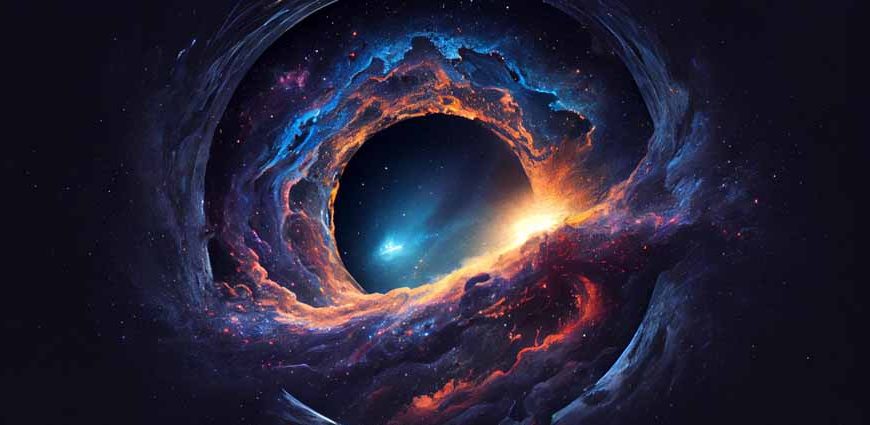If you have ever taken your child on a trek or to a campsite, you might have noticed your little one’s excitement as they gaze at the night sky, which looks so different from the one in towns or cities. In these places, stars fill the sky, and if you are lucky, you can spot a glowing band stretching across the sky.
That glowing band in the sky is the Milky Way—our home galaxy. But have you ever wondered what galaxies really are? How many of them are out there, and what makes the Milky Way so special? These are questions that naturally spark curiosity in both kids and adults. In this blog, we’ll uncover some fascinating and fun facts about galaxies to fuel your child’s imagination and help you turn stargazing into a fun and educational adventure.
What is a Galaxy?
A galaxy is a large gathering of stars, planets, gases, dust, and dark matter distributed in gravitationally bound structures. For instance, galaxies like Segue 1 and Segue 3 have about a thousand stars. On the other hand, galaxies, like UGC 2885 have over 200 billion stars. Although spiral galaxies make up over half of the observed galaxies, there are different types of galaxies, which we will talk about in the later part of the blog.
Here’s a fun fact about galaxies you can share with your kids: Once upon a time, scientists believed that all the stars in the night sky were a giant group. Then, in 1917, a gentleman named Thomas Wright suggested that there might be other such groups of stars. A thought that was later proved by astronomers to be true. And thus, galaxies were born! Isn’t that amazing?
Types of Galaxies for Kids
Scientists usually characterise Galaxies based on their aspects, like shapes and physical features. For instance, a galaxy that features a dense, bright central bulge made of stars and matter, surrounded by a flat, rotating disk, is called a spiral galaxy. On the other hand, a galaxy that has an oval or spherical shape and lacks the intricate structure of spirals is referred to as an elliptical galaxy. Here are some common types of galaxies for kids to know.
- Spiral Galaxies
- Elliptical Galaxies
- Irregular Galaxies
As the name suggests, spiral galaxies are characterised by their distinct spiral arms. They are surrounded by halos, star clusters and dark matter. These are invisible things that do not emit or reflect light but still have a gravitational pull on other matter.
Example: Our very own Milky Way!
These have shapes that range from oval to completely round. Unlike spiral galaxies, they usually contain little gas and dust. The stars here are older than the ones in spiral galaxies.
Example: Cygnus A is one among the names of galaxies.
As the name suggests, these galaxies have no particular shape. They do not have any known components the erstwhile-discussed galaxies have like spirals and disks. According to NASA, what makes irregular galaxies unique is the interactions they might have had in the past with other galaxies.Example: The Large and Small Magellanic Clouds
List Of Galaxies in the Universe
When we name something, we bequeath it with a sense of identity! Here are some names of galaxies in the universe that make those galaxies come alive in our eyes.
- Andromeda Galaxy
- Backward Galaxy
- Black Eye Galaxy
- Bode’s Galaxy
- Cartwheel Galaxy
- Hoag’s Object
- Fireworks Galaxy
- Milky Way
Constellation: Andromeda
This one’s a spiral galaxy, around 2.5 million Light Years from the Earth. The nearest major galaxy to the Milky Way. It is also one of the important galaxies in the list of galaxies.
Constellation: Centaurus
This galaxy appears to rotate backwards!
Constellation: Corna Berenices
The stunning dark band of dust in front of the galaxy’s dark nucleus lends it the nickname ‘Black Eye.’ Black Eye Galaxy is also one of the intriguing galaxies in the list of galaxies.
Constellation: Ursa Major
This one’s named after its inventor, Johann Elert Bode, who discovered it in 1774. It is also one of the oldest known galaxies in the list of galaxies in the universe.
Constellation: Sculptor
Cartwheel Galaxy is one of the fun names among galaxy names. The appearance of this galaxy is akin to that of a spiked cartwheel!
Constellation: Serpent’s Caput
Yet another galaxy, named after its inventor. In this case, Art Hoag. Hoag’s object is also one of the crucial galaxies in the list of galaxies in the universe.
Constellation: Cygneus and Cypheus
This one derives its name from its bright and spotty appearance. It is one of the most beautiful galaxies among the names of galaxies.
Constellation: Sagittarius
How can we forget our very own galaxy? Its dreamlike appearance from the Earth is that of a Band of Light. These are the names of galaxies.

13 Interesting and Fun Facts About Galaxies for Your Kids!
If you’re hungry for even more information about galaxies, you’re in for a stroke of luck!
In this section, we have compiled some interesting and fun facts about galaxies.
- The biggest of the big. The largest galaxy in the Universe is IC 1101. It has a mass of about 100 trillion stars!
- The Milky Way will one day merge with the Andromeda Galaxy. This will take around 4 billion years, and the resultant galaxy will be an ellipsoid named ‘Milkomeda.’
- Some galaxies are known as ‘Starburst Galaxies.’ The unusual amount of gas and dust that they have leads to a high rate of star production.
- There are more galaxies in the known Universe than you can imagine. If you have ever wondered how many galaxies there are in the universe, this one’s for you. There might be as many as two trillion galaxies in the observable universe!
- Most galaxies have black holes. These lie at the centre of the galaxies and are super massive in size.
- The capitalised ‘Galaxy’ is used to refer to the Milky Way. This is done to distinguish it from the billions of other galaxies in the universe.
- Galaxies can collide with each other. When such massive events take place, several interesting things can happen. Such as the formation of new stars.
- The Milky Way has two dwarf galaxies as its neighbours. The study of these galaxies, known as The Magellanic Clouds, is helping astronomers understand how galaxies are formed.
- The word ‘Galaxy’ is derived from a greek word. The word is ‘Galaxias’, and it means ‘Milky.’ This is a reference to our very own Milky Way.
- Most galaxies in the Universe are really smaller than Dwarf Galaxies. These are roughly one hundredth the size of The Milky Way, and have only a few billion stars.
- They are held together by gravity. It is the force of gravity that keeps a galaxy together. Without gravity, the stars of a galaxy would fly off into space!
- The command ‘Okay Google’, is a tribute to a book! It pays homage to a famous line in the bestselling novel ‘The Hitchhiker’s Guide to the Galaxy.’
- The Milky Way completes a rotation every 200 million years. One full revolution ago, dinosaurs ruled the Earth. These are some of the interesting galaxy facts.
15 Fascinating Facts About the Milky Way to Share With Your Kids
The galaxy we call home, the Milky Way, is full of incredible mysteries and wonders. Here are 15 fun and intriguing facts you can share with your children to spark their curiosity:
- The Milky Way Has Ancient Mythical Origins
- It Has Billions of Stars and Planets
- The Milky Way Is Enormous
- The Milky Way Is a Spiral Galaxy
- A Black Hole Sits at the Center
- It Belongs to a ‘Local Group’ of Galaxies
- It Will Collide With Andromeda Someday
- There Are Likely Millions of Planets
- Our Solar System Is Far From the Center
- It’s Surrounded by Dark Matter
- It’s Home to Ancient Stars
- The Earth Is Only 18 Galactic Years Old
- There Could Be Thousands of Solar Systems
- Our Solar System Is Tiny in Comparison
- The Milky Way Has Stars as Old as the Universe
The ancient Greeks believed the Milky Way was created when the goddess Hera accidentally spilt her milk across the heavens while nursing Hercules. Although it’s just a story, it captures the imagination of how people once explained the night sky.
On a clear night, you might see around 4,500 stars with just your eyes. But astronomers estimate that the Milky Way contains between 100 and 400 billion stars! To put it into perspective, there are more stars in the universe than grains of sand on all the beaches on Earth.
The galaxy spans about 100,000 light years across. A single light year is the distance light travels in one year—roughly 9.46 trillion kilometres. So, even at the speed of light, it would take 100,000 years to travel from one end of the Milky Way to the other!
Our galaxy has a striking spiral shape with a dense centre and long, curved arms that wind outward. This spiral structure is common among galaxies, but there are other types like, elliptical and irregular galaxies.
At the heart of the Milky Way lies a massive black hole called Sagittarius A. It’s estimated to be four million times the mass of our sun and acts like a gravitational anchor for the entire galaxy.
The Milky Way is part of a galactic neighbourhood called the Local Group, which contains over 50 galaxies. Some of our closest neighbours include the Andromeda and Triangulum galaxies, both visible to the naked eye.
The Milky Way and Andromeda galaxies are on a collision course, moving towards each other at 400,000 km/h. Don’t worry, though—this galactic crash won’t happen for another 4 billion years!
Most stars in the Milky Way have planets orbiting them. Millions of planets could have 100–400 billion stars in the galaxy. Some of these may even have the potential to support life.
The solar system is located about 30,000 light years from the Milky Way’s Center and slightly above its galactic plane. We’re safely tucked away in a quieter part of the galaxy.
The Milky Way is enveloped by a mysterious substance called dark matter, which makes up most of the galaxy’s mass. Although we can’t see it, its gravitational effects help hold galaxies together.
The oldest stars in the Milky Way are found in globular clusters—groups of stars that can be as old as 12.7 billion years, nearly as old as the universe itself.
The solar system takes about 250 million years to complete one orbit around the Milky Way. Since its formation, Earth has completed only 18 such orbits, or “galactic years.”
So far, scientists have discovered over 500 solar systems in the Milky Way. However, the actual number is likely in the millions, waiting to be explored.
If the Milky Way were shrunk to 100 meters in diameter, our entire solar system would be no larger than a single grain of sand.
One of the oldest stars in the galaxy, known as the Methuselah star (HD 140283), is around 13.6 billion years old—almost as old as the universe itself, which is estimated to be 13.8 billion years.
The Milky Way’s vastness and mysteries remind us just how small we are in the grand cosmos. By learning more about our galaxy, we gain a deeper appreciation of the universe and our place within it. Encourage your kids to keep looking up and asking questions—there’s always more to discover!
If your child is fascinated by the stars or galaxies, why not make astronomy a family activity? Our blog—Astronomy For Kids – Definition, Facts & Fun Activities—is a fantastic way to dive deeper into this topic with your little ones. This blog provides easy-to-understand definitions about space and hands-on fun activities like stargazing, creating DIY constellations, or building a model solar system.
Summing Up
Galaxy is a wonderful and intriguing topic for children to learn. In this article, we have covered fun and interesting galaxy and Milky Way facts for your children. For informative and accurate articles on all things related to your little one’s development, growth, health, and nutrition, follow EuroKids Blogs and do check out EuroKids Preschool for the first step in your kid’s educational journey!















